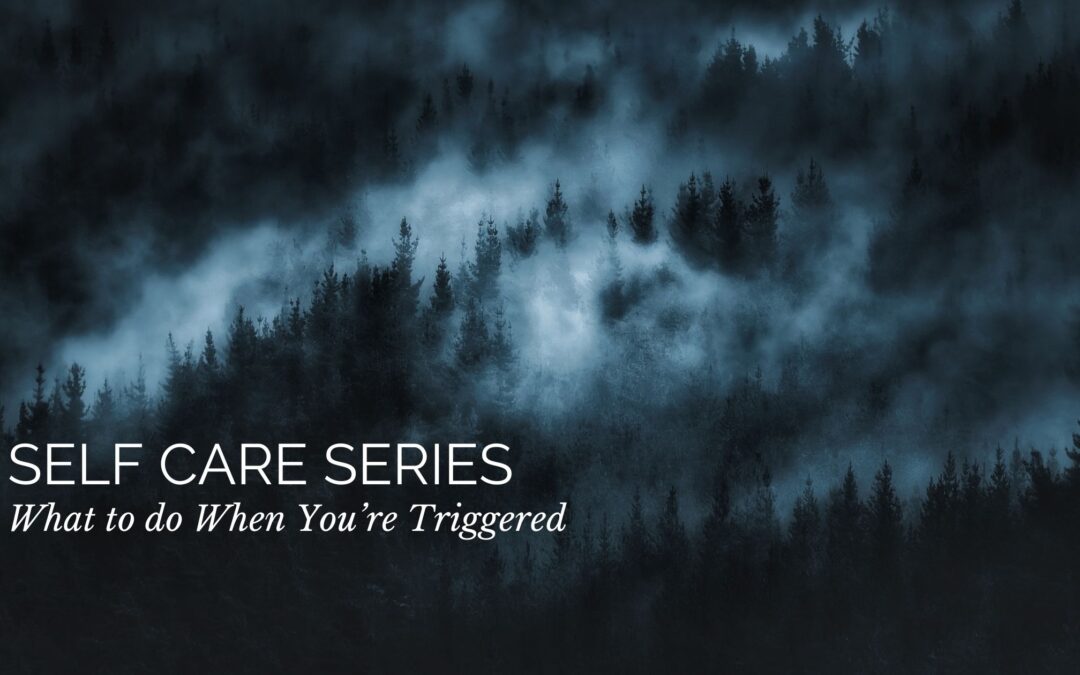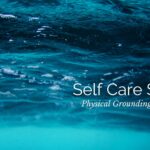What does it mean to be triggered?

For most people there is an acute part of the trigger as well as a more chronic part of the trigger. To get through (and get through is the correct terminology here! We aren’t talking about thriving, just surviving!) the acute part of the trauma, I recommend grounding. Many of our resources and tools simply won’t work well when we are too heightened, but grounding should bring you down enough for those resources to come back online later on.
What is grounding?
The best way to care for yourself during a time you are acutely triggered is to use grounding exercises.

Mental grounding: Name 10 cereals, try to count backwards from 100 by 7’s, try and recall from memory your favorite recipe, Try to recipe the Pythagorean theorem or recite song lyrics.
The entire goal of grounding is to get yourself out of fight or flight (or at least less out of fight or flight) and let your frontal lobe re-engage. Grounding first, will help your other resources work better.
Ongoing trigger:

Eat at least somewhat healthfully and if you cannot manage that, simply eat
- Drink water– your body is emotionally detoxing so you will likely require more water than usual
- Try to have a good sleep hygiene and sleep regimen, i.e. going to bed at about the same time, taking screens out of the bedroom, having a good routine, etc.
- Try to move your body– anywhere from intense exercise to stretching or a light walk
- Engage in nature– Plenty of research shows that even just looking at green space from indoors has positive effects on mood and staying regulated and grounded.
- Reach out to friends – even if you aren’t talking about what is bothering you
- Engage in soothing behavior– Listen to music, take a bath or shower, do a face mask, rub lotion into your skin, etc.
Titration into and out of the distress:

Some ideas for building healthy distractions:
It can be a great idea to build out distractions so that when you need them, they’re easily accessible. Ask friends to have a meme text chain or send funny videos back and forth with you. It can feel great to know you at least have a 2-minute laugh coming your way each day. Take up the art of the jigsaw puzzle. It is hard to think about much else. Enter into a “wildlife spotting challenge” or a “song of the day” challenge. Make a fitness plan or a goal for a certain number of minutes spent in nature for the year.
It can be very challenging to push through when you are feeling triggered but as you practice more and more, find grounding techniques that work for you, and make an effort to make self care a priority (even for 5 minutes a day) you will start to learn how to better soothe your central nervous system. Working with a trauma informed therapist can also help lessen those triggers by helping you identify them and providing individualized resources and tools for you to combat them and even thrive.
Photo Credits:
Photo by Ralph (Ravi) Kayden on Unsplash
Photo by Dustin Scarpitti on Unsplash
Photo by Jess Bailey on Unsplash
Photo by The Creative Exchange on Unsplash


 Eat at least somewhat healthfully
Eat at least somewhat healthfully

